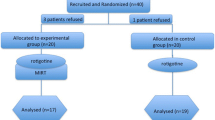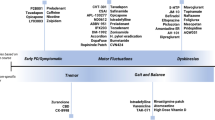Summary.
Previous studies demonstrated the efficacy of budipine on motor symptoms of treated patients with Parkinson’s disease (PD) with rating scales. However rating procedures may be subjective and variable. Therefore additional use of instrumental motor tests are helpful to reflect therapeutic benefits. Objective was to test the efficacy of 20 mg budipine (t.i.d.) in 51 previously untreated idiopathic PD patients in a monocenter, double-blind, placebo-controlled trial with a 2:1 randomisation over a three month interval. Budipine was not superior to placebo application. However a detailed analysis of rating results shows, that budipine but not placebo treated patients significantly improved. Budipine caused significant better outcomes of motor tests with execution of complex movements, but did not change results of tasks, which demand for simple motions. Placebo significantly improved dopamine sensitive motor test results. These outcomes may result from improved non dopaminergic neurotransmission due to budipine. Placebo caused better results of dopamine sensitive tests, since placebo may release endogenous dopamine.
Similar content being viewed by others
Author information
Authors and Affiliations
Rights and permissions
About this article
Cite this article
Müller, T., Kuhn, W. & Przuntek, H. Efficacy of budipine and placebo in untreated patients with Parkinson’s disease. J Neural Transm 112, 1015–1023 (2005). https://doi.org/10.1007/s00702-004-0247-3
Received:
Accepted:
Published:
Issue Date:
DOI: https://doi.org/10.1007/s00702-004-0247-3




